C&S Standard Gauge Leadville Operations
12



















12
C&S Standard Gauge Leadville Operations
|
I realize that this is a little off topic and feel free to delete it if warranted.
I am modelling the Leadville-Climax branch in the 1960s-1970s in HO Scale in a 13'6" by 10' space. The trackage in Leadville is fairly easy to figure out using USGS Topo maps. I am having difficulty with the trackage at the Climax Molybdenum mine. I have a copy of Stephen M. Voynick's Climax: The History of Colorado's Climax Molybdenum Mine and Doris B. Osterwald's Highline to Leadville. Does anyone know of any track charts that would indicate the which commodities were handled at which spurs? Are there any maps or diagrams out there which illustrate what roles the various buildings at the Climax complex had during this era? Was there a scale track at Climax to weigh carloads of concentrate? Did the mine receive any tankcars carrying chemicals or fuel oil during this era. I know that they were receiving tank cars in 1980 because a tankcar derailed along with the #6223 in the accident which resulted in the 828/6223 being rebuilt with a chopped nose. Did the C&S have any customers in Leadville during this time? When was the freight house sold off? I am also looking for a diagram for the C&S B-4R Standard Gauge 2-8-0s and the wooden cabooses which were used on the branch. I have an ancient PFM AT&SF 1950 Class 2-8-0 which I will use as a basis for the #641. Does anyone have a photo of the pilot deck on the #641 showing how the Plow was mounted to it? Thanks for any assistance. Paul Kattner |
Re: C&S Standard Gauge Leadville Operations
|
This post was updated on .
Hi Paul,
Welcome to Roper's Doghouse. I think that you will find that as long as we discuss the C&S and the South Park or Clear Creek lines, even standard gauge topics are interesting. I don't know anything about the Climax operation during standard gauge times. Chris Walker is our resident Mine and Mill authority, perhaps he can opine. But as to information as to the B-4-R and B-4-R1 2-8-0s and the standard gauge wood cabooses, perhaps I can help. F. Hol Wagner's The Colorado Road, published in 1970, has many folio drawings for both narrow gauge and standard gauge locomotives. A trip to my bookcase produced these:  Class B-4-R, 1901-1906, numbers 600-643, from Wagner's The Colorado Road, page 119.  Class B-4-R1, 1907, numbers 644-649, from Wagner's The Colorado Road, page 131. A builder's photo of B-4-R1 number 649, illustrates that this class was built with slide valves instead of piston valves, as in the original B-4-R class: 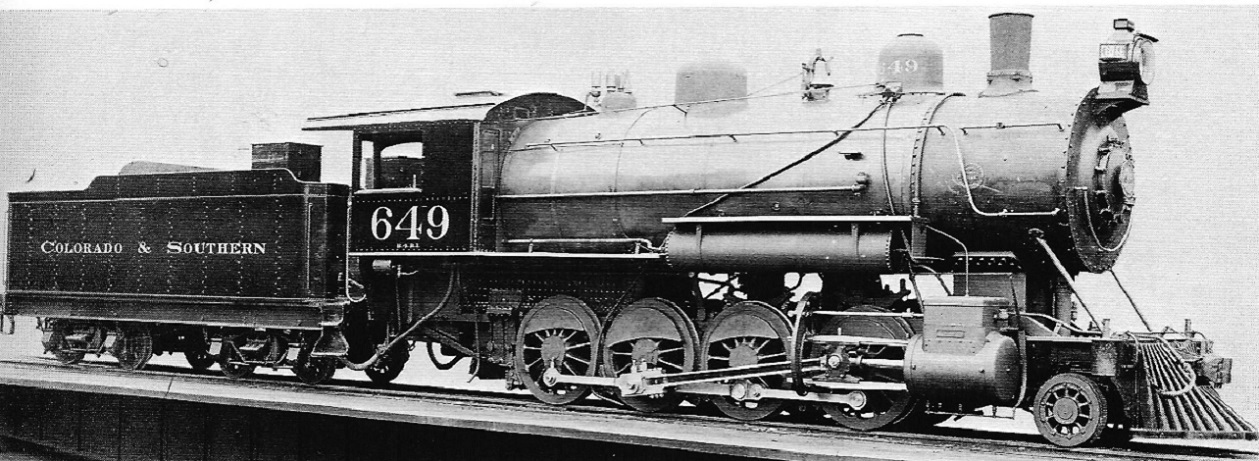 Wagner's The Colorado Road, page 131. This early Otto Perry photo of 1916 shows the B-4-R class, pretty much as they looked when they left the builders: http://digital.denverlibrary.org/cdm/fullbrowser/collection/p15330coll22/id/44267/rv/singleitem/rec/4 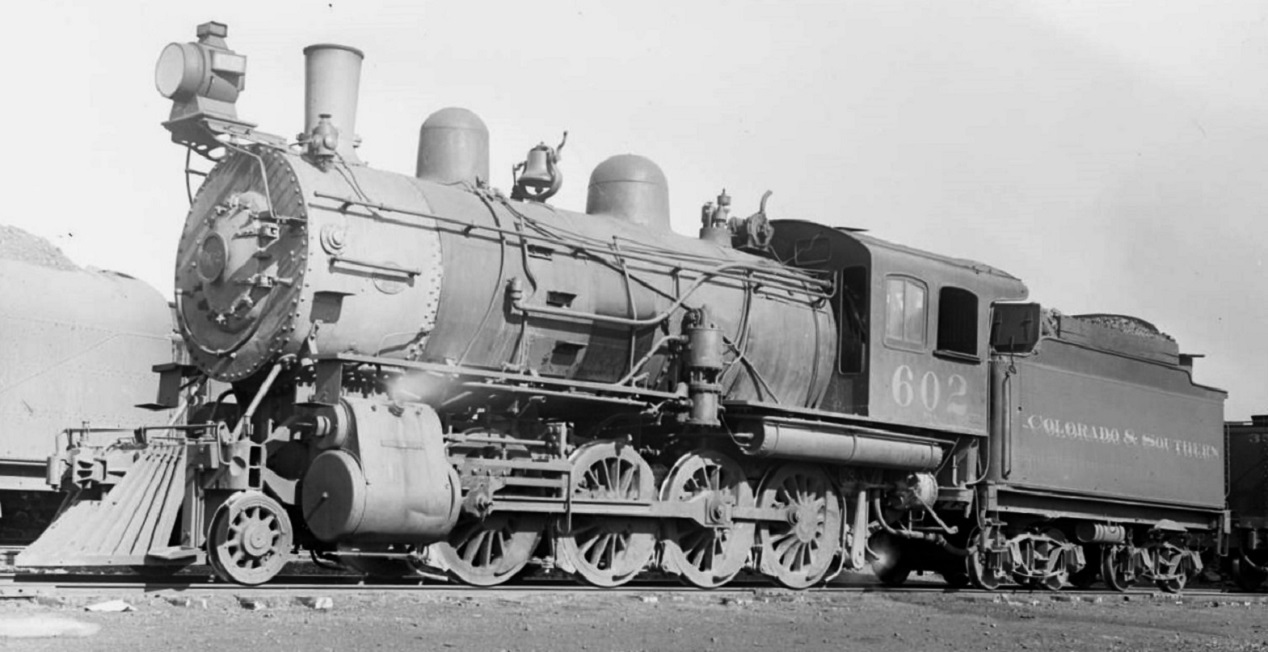 (I know you're are interested in the 1960s C&S locomotives out of Leadville, but I just love 1st and 2nd decade C&S steam of either gauge, so just bear with me for a bit.) Now as to your favorite engine, number 641, there are quite a few good photos of said engine on the Denver Public Library web site: http://digital.denverlibrary.org/cdm/fullbrowser/collection/p15330coll22/id/44481/rv/singleitem/rec/1 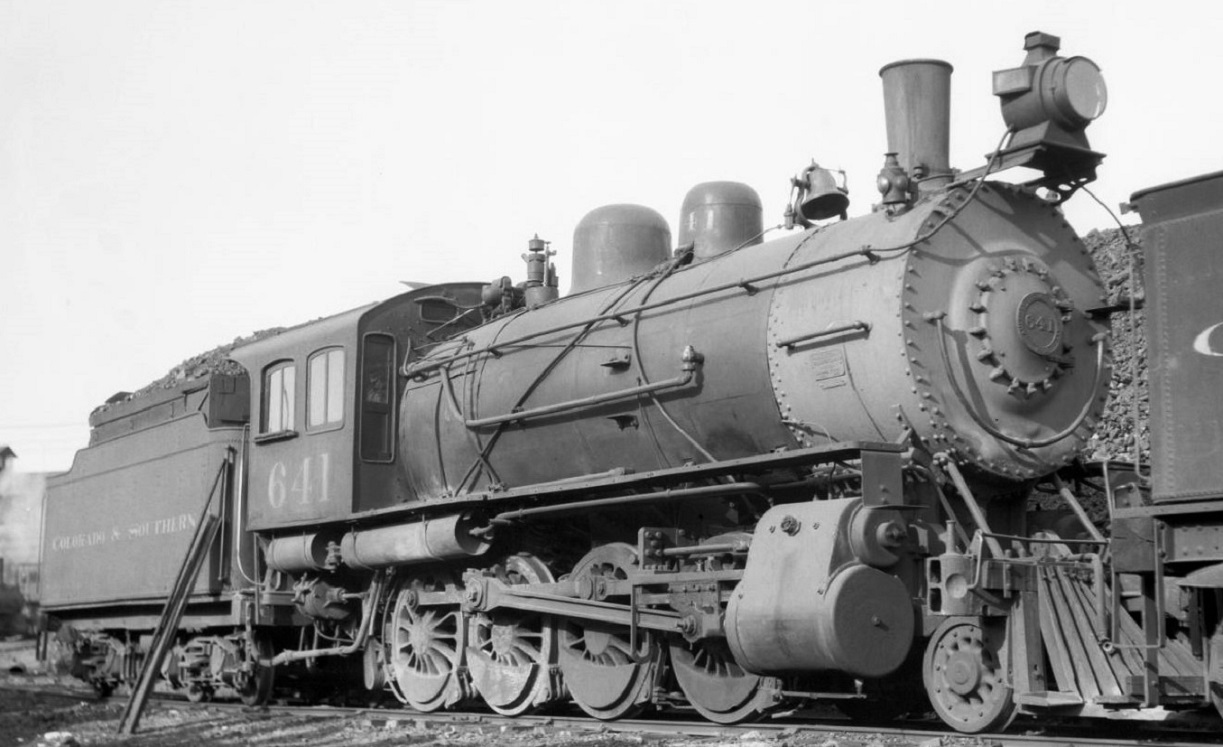 C&S 641 c1918 http://digital.denverlibrary.org/cdm/fullbrowser/collection/p15330coll22/id/44486/rv/singleitem/rec/5  In the early 1920s, even standard gauge tenders went through the "intermediate" phase, with modified tender collars. And that box headlight looks familiar, doesn't it? As to number 641 in the 1960s, specifically how the plow was attached, the following are the best DPL photos: http://digital.denverlibrary.org/cdm/fullbrowser/collection/p15330coll22/id/45183/rv/singleitem/rec/2 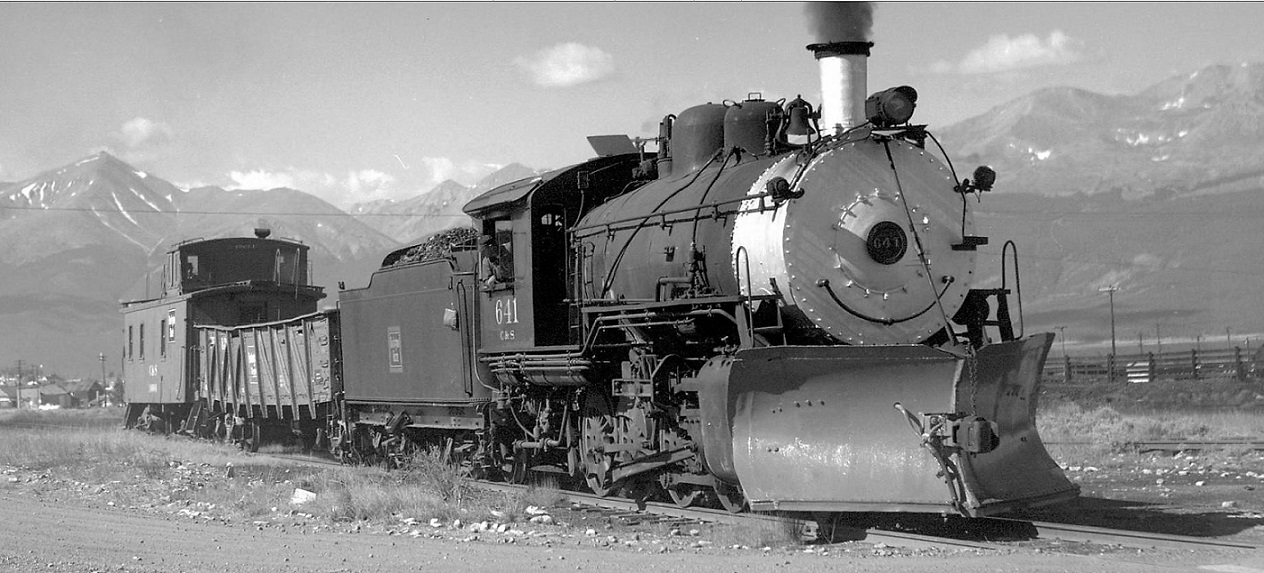 http://digital.denverlibrary.org/cdm/fullbrowser/collection/p15330coll22/id/45182/rv/singleitem/rec/6  http://digital.denverlibrary.org/cdm/fullbrowser/collection/p15330coll22/id/45199/rv/singleitem/rec/16 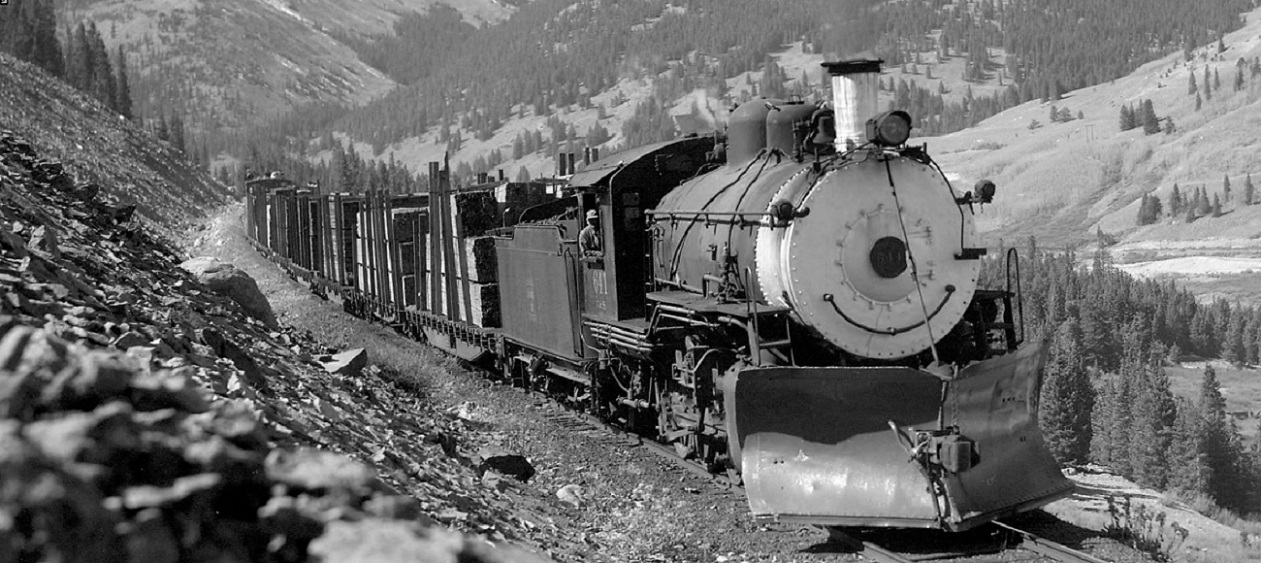 Only a couple of photos givea hint as to how the plow was attached to the pilot, looks like a heavy metal brace, with horizontal and diagonal components, attached the plow to the front of the lower cylinder cover: http://digital.denverlibrary.org/cdm/singleitem/collection/p15330coll22/id/44491/rec/11 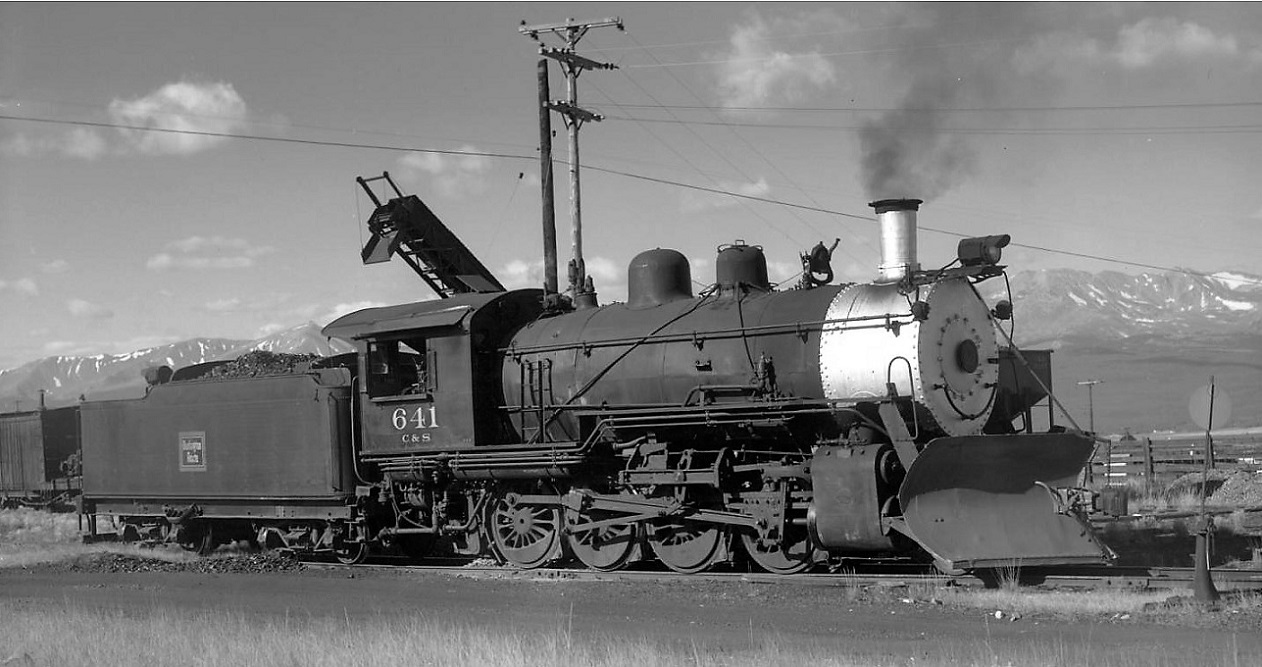 http://digital.denverlibrary.org/cdm/singleitem/collection/p15330coll22/id/44501/rec/22  And these John West photos of 641 in Leadville give a hint of the braces out to the plow from the engineers view: https://www.flickr.com/photos/124319201@N04/16164147327/ https://www.flickr.com/photos/124319201@N04/15727598484/in/photostream/ Finally, I believe that the number 641 is still on display in Leadville, plow still mounted to the pilot (at least that's what Tom Klinger ("South Park"??) says in his book, C&S High Line Memories and Then Some. Perhaps someone living in the Leadville area could take some photos with their phone and post them here. As to the wood cabooses, here is a folio sheet of the post WWI C&S standard design: 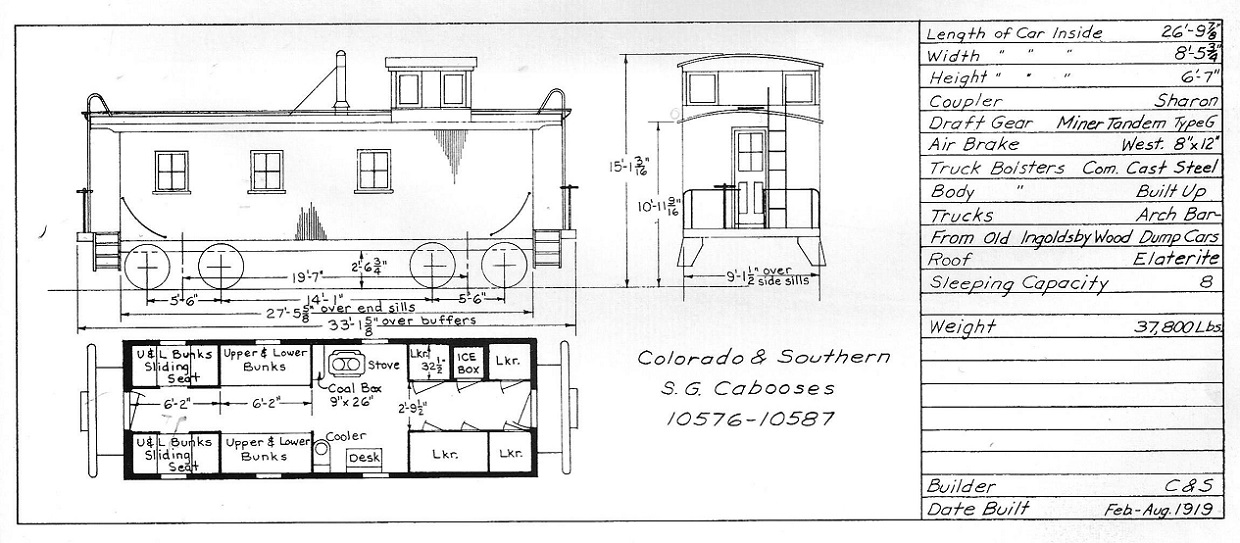 Wagner's The Colorado Road, page 343. And a couple of DPL photos: http://digital.denverlibrary.org/cdm/fullbrowser/collection/p15330coll22/id/43989/rv/singleitem/rec/2 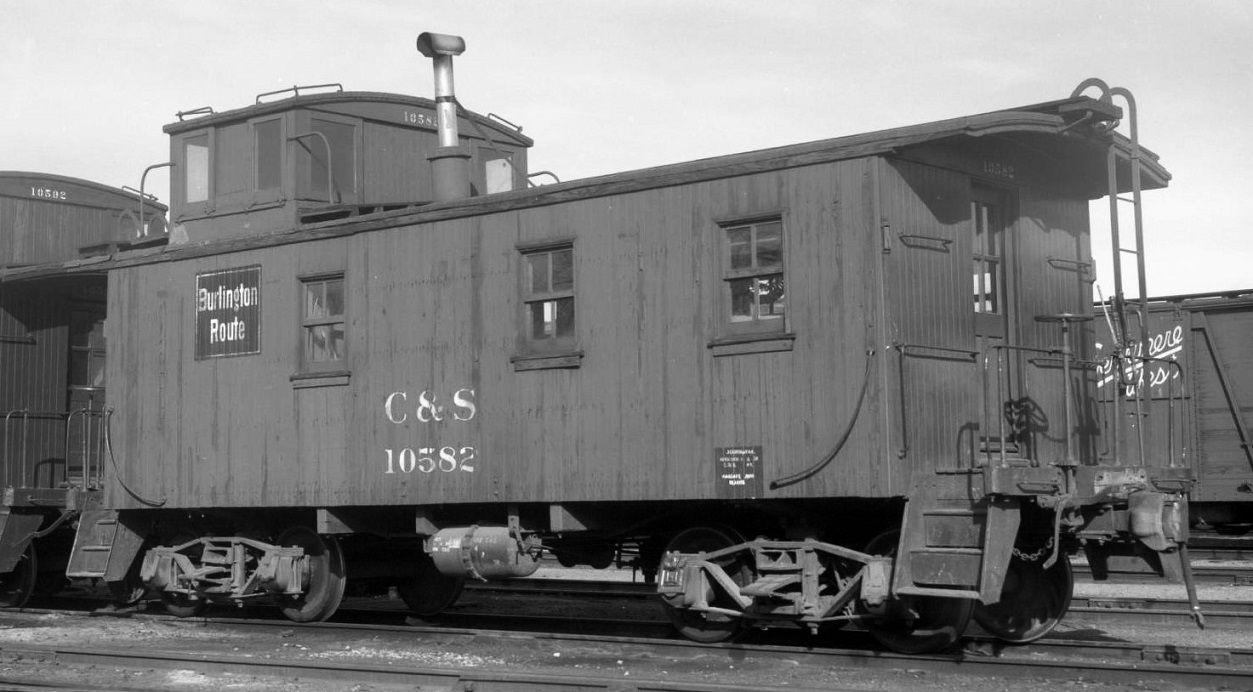 With arch bar trucks . . . http://digital.denverlibrary.org/cdm/fullbrowser/collection/p15330coll22/id/43985/rv/singleitem/rec/27 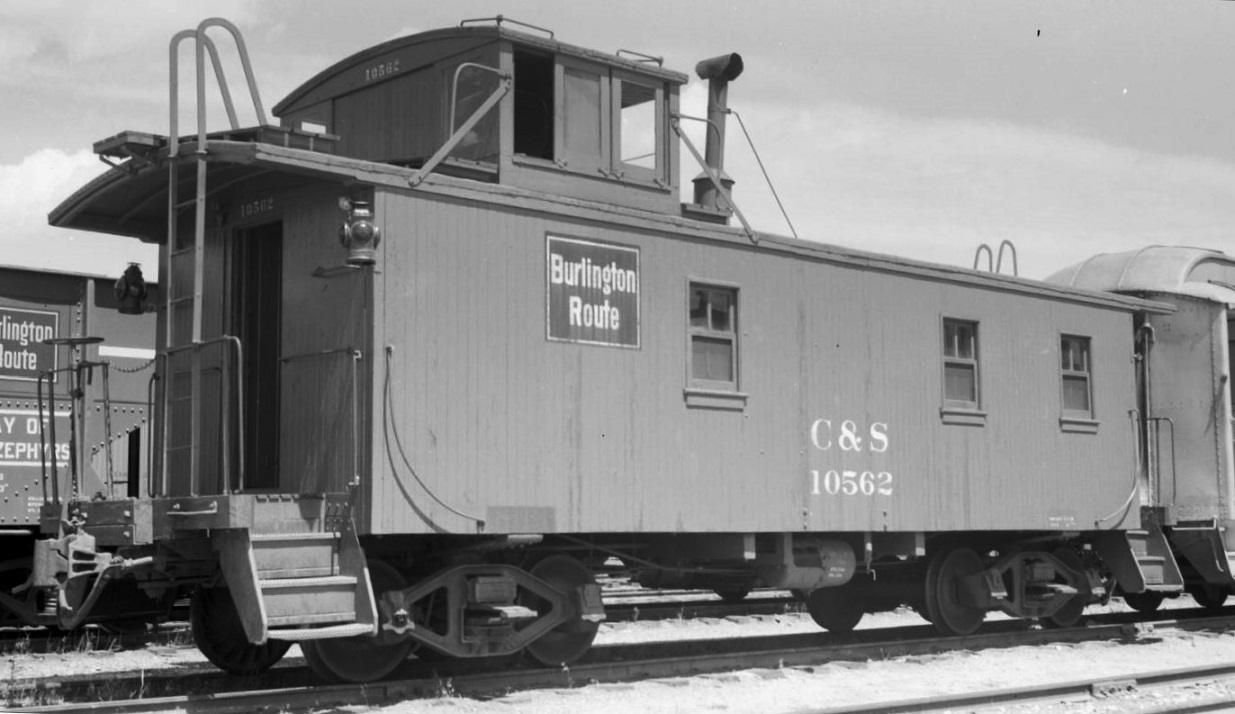 . . . and T-section Bettendorf trucks--looks similar to the narrow gauge Bettendorf truck of 1907-1910, doesn't it?? This John West color photo shows caboose 10604 at Climax: https://www.flickr.com/photos/124319201@N04/16162673670/in/photostream/ If you don't care to scratch build a caboose, Overland imported this very caboose: http://www.brasstrains.com/BrassGuide/PDG/Detail/20095/HO-Rolling-Stock-Caboose-Colorado-Southern-CABOOSE. I see them on eBay from time-to-time, when searching for Overland C&S Sn3 stuff. I have to admit, even standard gauged in the 1960s, the South Park / C&S "Highline" operation was still way cool!
Jim Courtney
Poulsbo, WA |
Re: C&S Standard Gauge Leadville Operations
|
Administrator
|
Hi Paul,
To my knowledge, the only two standard gauge C&S 2-8-0's used out of Leadville were the #641, which is still there, and #638, which is the only other surviving standard gauge C&S engine, also on display in Trinidad. There are several wood cabooses scattered around, so it should be pretty easy to find one of the same class, or one that would be pretty close. Good luck with your project, and please keep us posted as to your progress. |
Re: C&S Standard Gauge Leadville Operations
|
Might also look at 10583 now in Greeley Freight House museum surrounded by then HO layout. I've seen at least 2 pictures of this archbar car in Leadville on rotary runs.
|
Re: C&S Standard Gauge Leadville Operations
|
This post was updated on .
In reply to this post by Mike Trent
Mike,
. . . the only two standard gauge C&S 2-8-0's used out of Leadville were the #641, which is still there, and #638, which is the only other surviving standard gauge C&S engine, also on display in Trinidad. Actually, Hol Wagner's book has photos of two other 600 series locomotives at Leadville and Climax, C&S 619 and C&S 640, both in the late 1940s or early 1950s. (Edit: This turns out to be an understatement, several other standard gauge engines climbed Fremont Pass. See my post below.) For what it's worth, here is a photo of C&S 638 taking coal at Leadville: http://digital.denverlibrary.org/cdm/singleitem/collection/p15330coll22/id/82951/rec/28 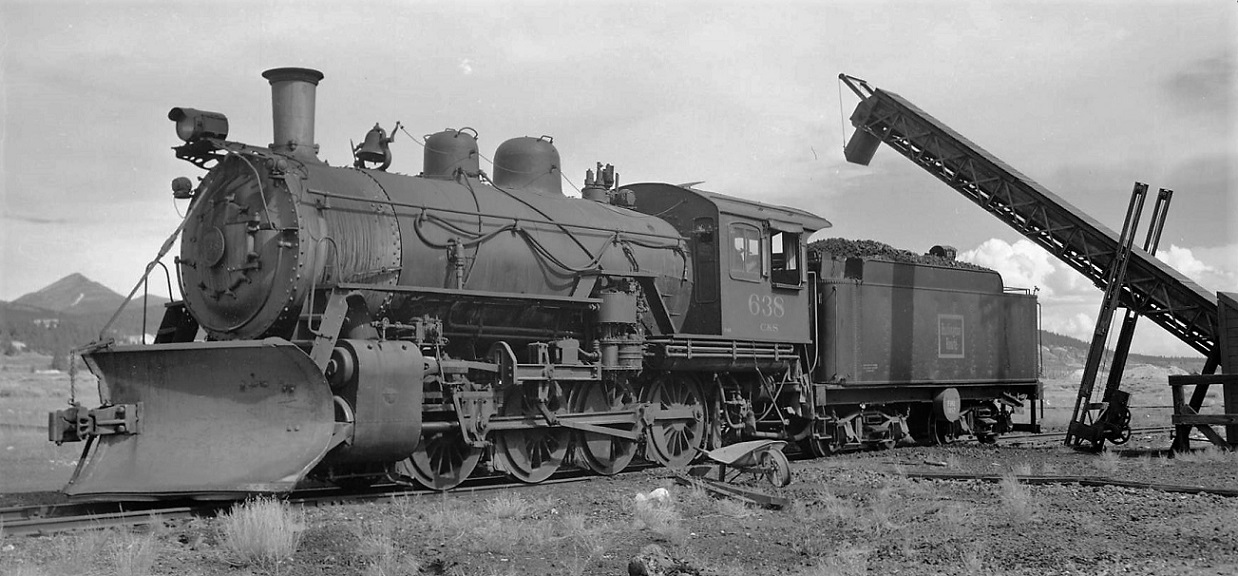 Unfortunately, there isn't much detail to answer the question of how exactly the plow was attached to the pilot: 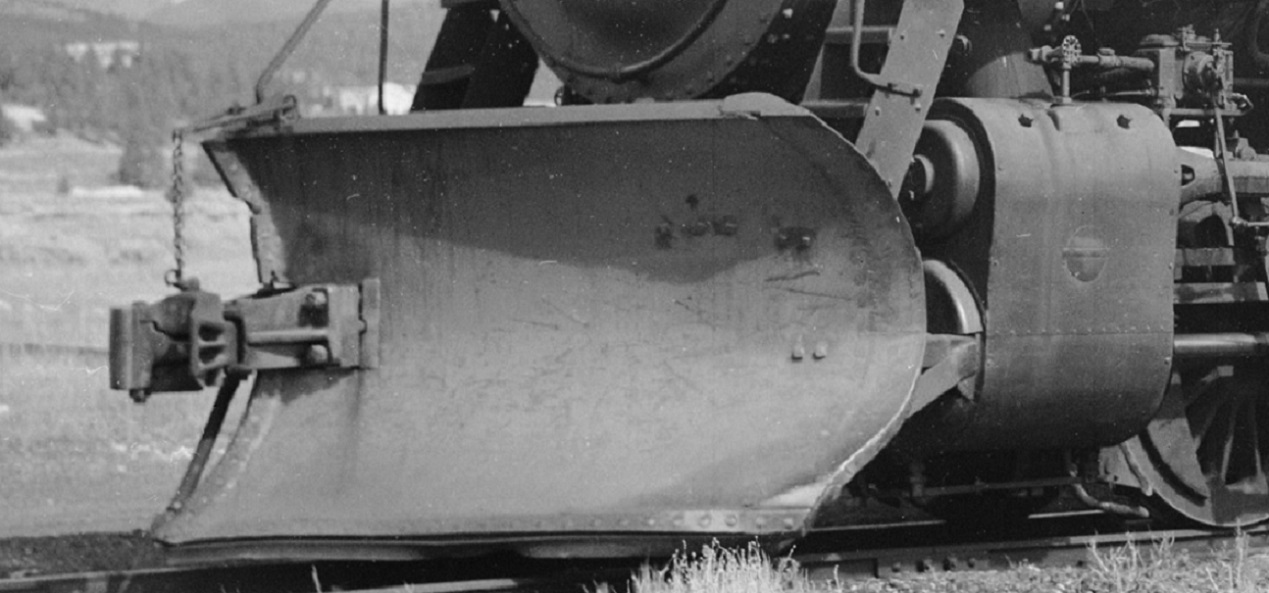 Nor do the photos of number 641, in the early 1960s: http://digital.denverlibrary.org/cdm/singleitem/collection/p15330coll22/id/44491/rec/11 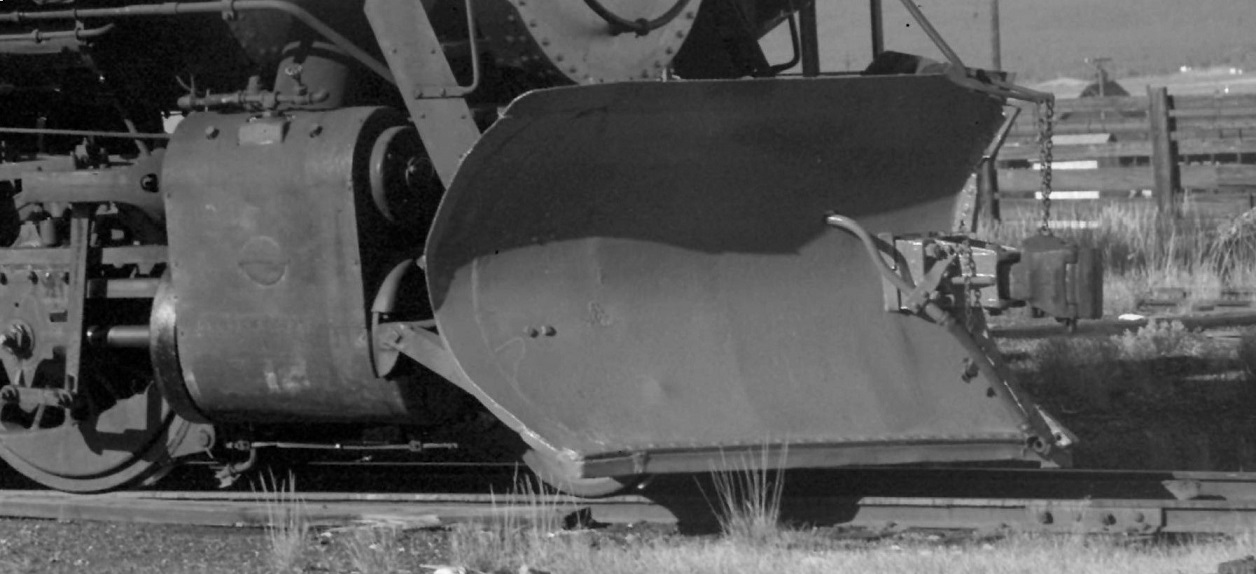 I haven't found any other photos of 600 series engines with plows attached. One wonders whether the same plow was used for every 600 series locomotive that was assigned to the branch, and where the plows were changed out: The Leadville roundhouse or in Denver? By all means, Paul, please share photos from time to time as to the progress with your layout and models. Jim
Jim Courtney
Poulsbo, WA |
Re: C&S Standard Gauge Leadville Operations
|
In reply to this post by Paul Kattner
Paul also asked:
Did the mine receive any tank cars carrying chemicals or fuel oil during this era. I know that they were receiving tank cars in 1980 because a tank car derailed along with the #6223 in the accident which resulted in the 828/6223 being rebuilt with a chopped nose. I spent a bit of time last like looking through DPL photos of Climax last night, and did find this one 1960s photo (I think I see my 1961 Chevy Impala among the parked cars!): http://digital.denverlibrary.org/cdm/singleitem/collection/p15330coll22/id/36913/rec/43 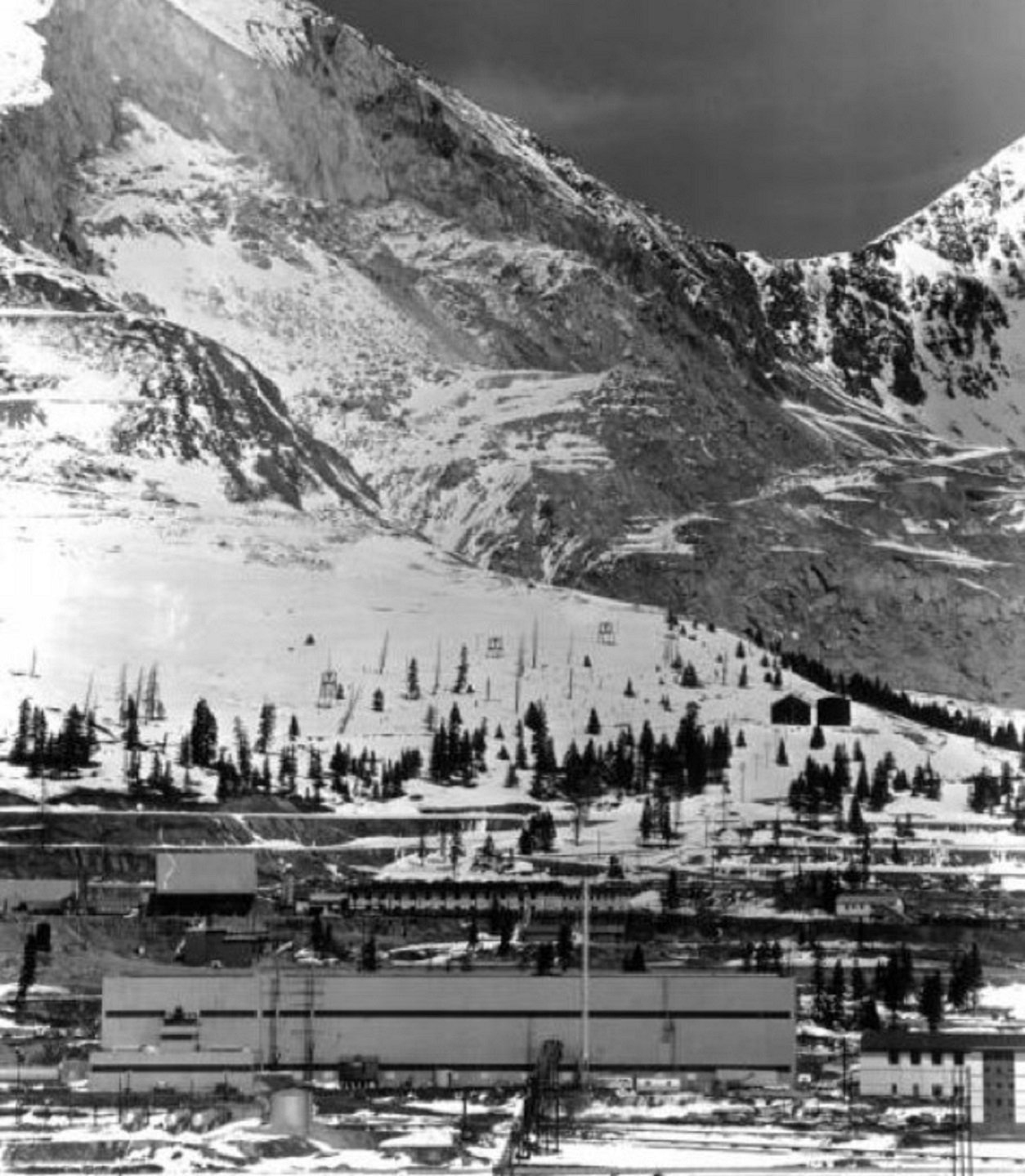 Enlarging the lower left corner, there are both vertical and horizontal storage tanks for volatile liquids or propane/LPG, suggesting a destination for tank cars at Climax: 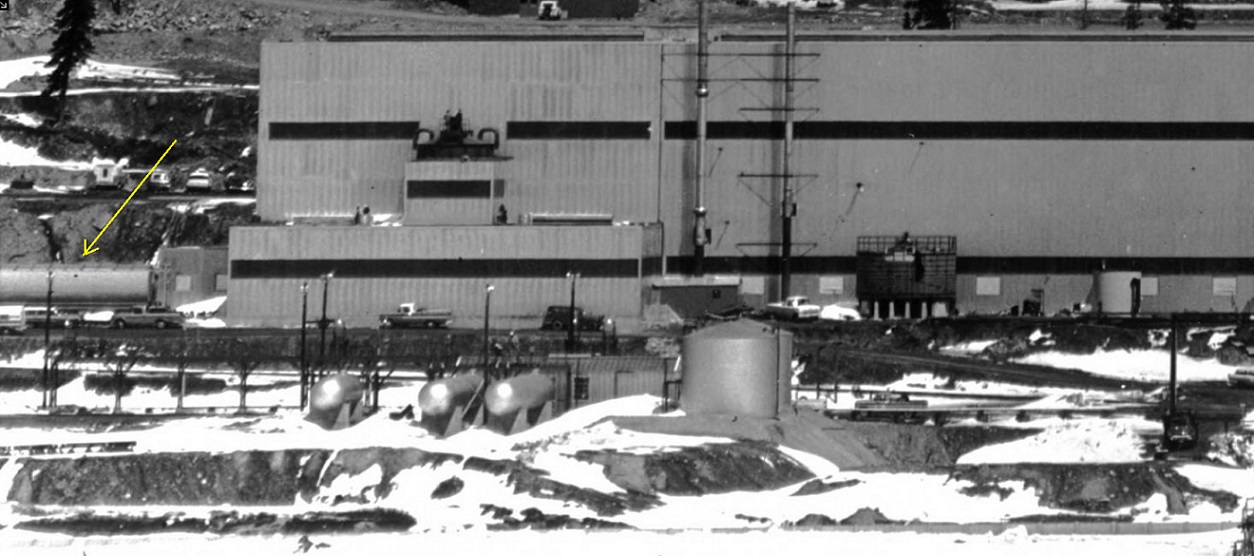 Also, is that a covered hopper I see (yellow arrow)?? Were the molybdenum balls or pellets eventually shipped in bulk in covered hoppers?
Jim Courtney
Poulsbo, WA |
Re: C&S Standard Gauge Leadville Operations
|
This post was updated on .
In reply to this post by Jim Courtney
I'm really glad that Paul began this thread, I've learned a number of new things the past few days.
As a die-hard South Park narrow gauge fan, I've always felt that when the last passenger and freight trains departed Leadville for Denver the story ended. The Leadville-Climax narrow gauge remnant was the epilogue of the story, and when the last clean up train arrived in Leadville and the gauge officially became standard, the book was closed on the South Park lines, in 1943. But reading about the subsequent standard gauge steam operations has been a surprise. C&S steam continued to climb Fremont pass for another 19 years, until October 11, 1962. That accounts for 31% of C&S steam operation, and almost 25% of all steam operation, on the original South Park "Highline". In reading Hol Wagner's discussion of C&S standard gauge steam at Leadville, there were quite a few locomotives used: In the first years of standard gauge operation, two engines, 455 and 638, were assigned to Leadville. The 455 was scrapped a few years later, in 1947. When the 638 was rotated to Denver for shopping, other 600 series 2-8-0s were rotated to Leadville including 610, 619 and 640, in the late 1940s and early 1950s. In the mid to late 1950s, number 638 returned to Leadville, and was finally replaced with 641 in 1958; 641 continued running to Climax until dieselization on October 11, 1962. I knew nothing about the 451-455 series 2-8-0s until last evening. They were the first "modern" heavy motive power that the new C&S obtained in 1900, later classed B-4-P in 1906; they were the immediate predecessors of the B-4-R, 600 series engines:  Class B-4-P, 1900, numbers 451-455, from Wagner's The Colorado Road, page 117. http://digital.denverlibrary.org/cdm/singleitem/collection/p15330coll22/id/43029/rec/6  Otto Perry, 1932 The 455 was an attractive locomotive--no air tanks atop the boiler, but the high headlight bracket and the steel pilot beam are pure C&S. If the engine had a Ridgeway stack, at first glance it could be mistaken for one of the big Brooks B-4-Fs . . . whoops, as it turns out, three of the 451-455 class did have Ridgeway spark arrestors applied, when assigned to the Falcon branch. Perhaps 455 was one of those engines. 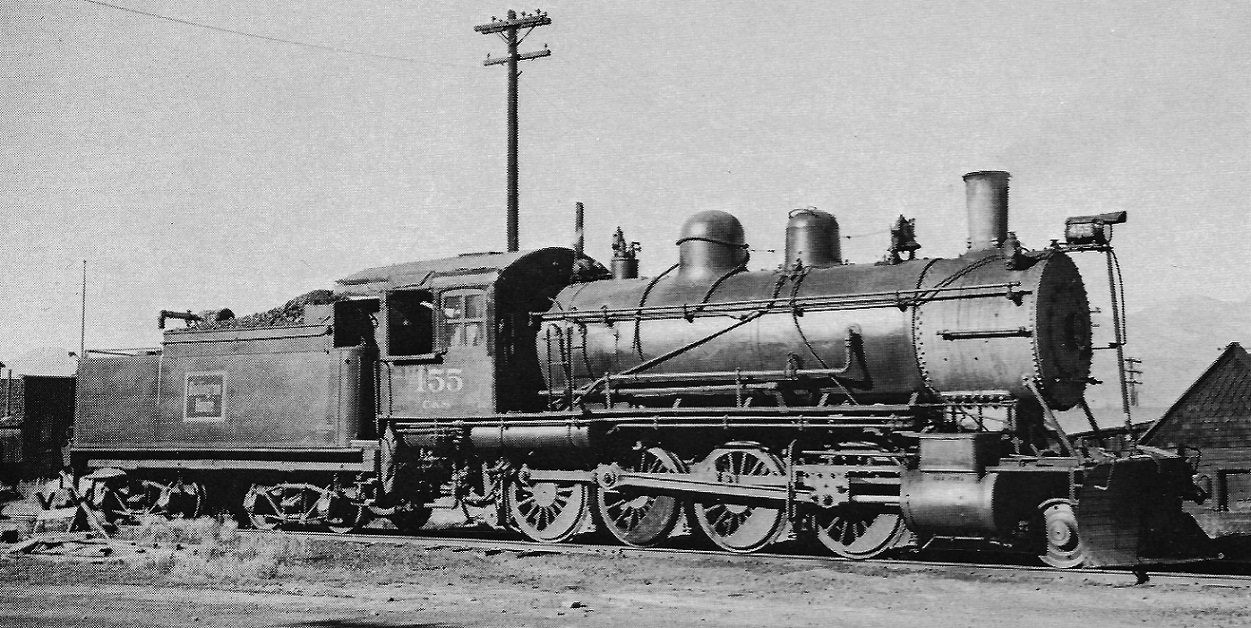 John Maxwell photo, September 7, 1946, in Wagner's The Colorado Road, page 118. This is the only photo of 455 in Leadville that I've found. The engine is spotted in the familiar place, on the 3 rail CM connecting track, behind the depot. That looks like Keith's Shapeways water column over the rear of the tender. The plow and its application to the pilot is different from those of the 600 series engines. And what a neat headlight. Just for the heck of it, I located photos of each of the standard gauge C&S 600 series locomotive that has been cited by Wagner as having worked on the Leadville to Climax run, and present them to you in more or less chronologic order: http://digital.denverlibrary.org/cdm/fullbrowser/collection/p15330coll22/id/83050/rv/singleitem/rec/2  Otto Perry, c1955. The 610 worked out of Leadville in the late 1940s. 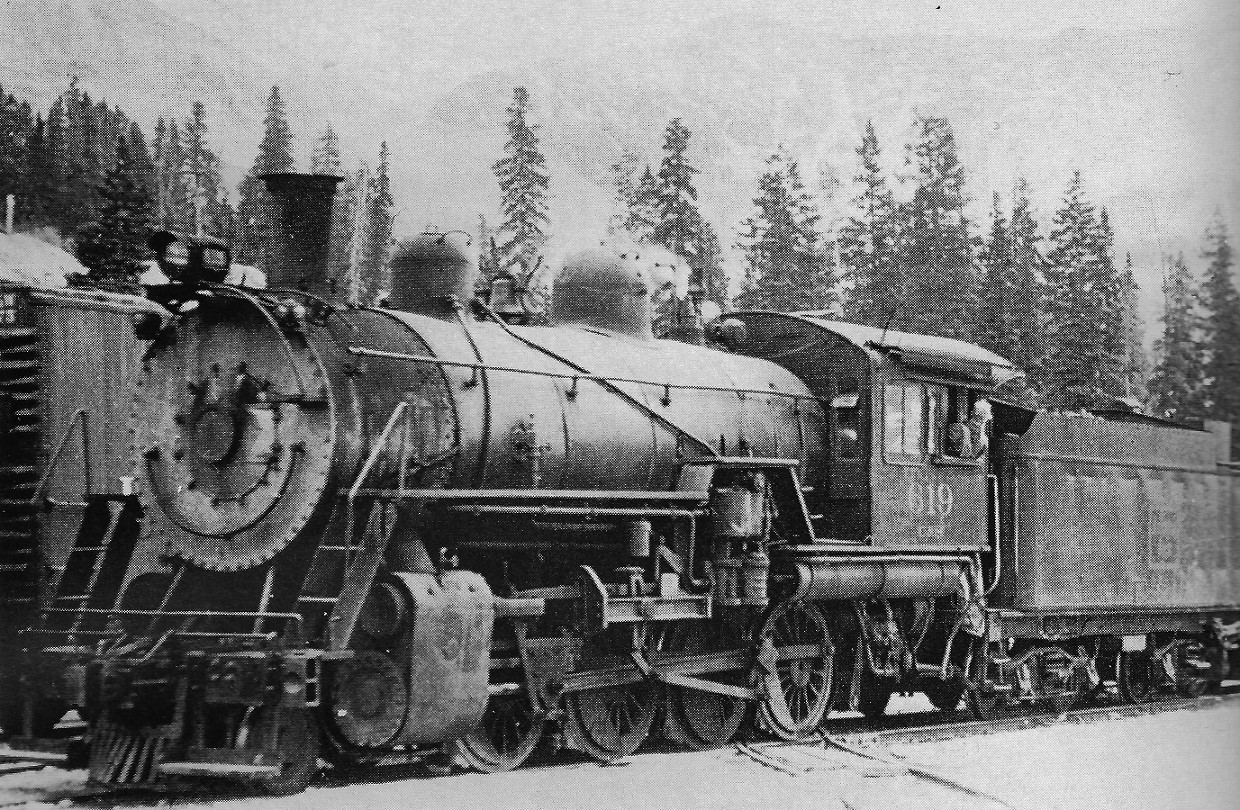 R.A LeMassena photo, c1947, Climax, in Wagner's The Colorado Road, page 128. 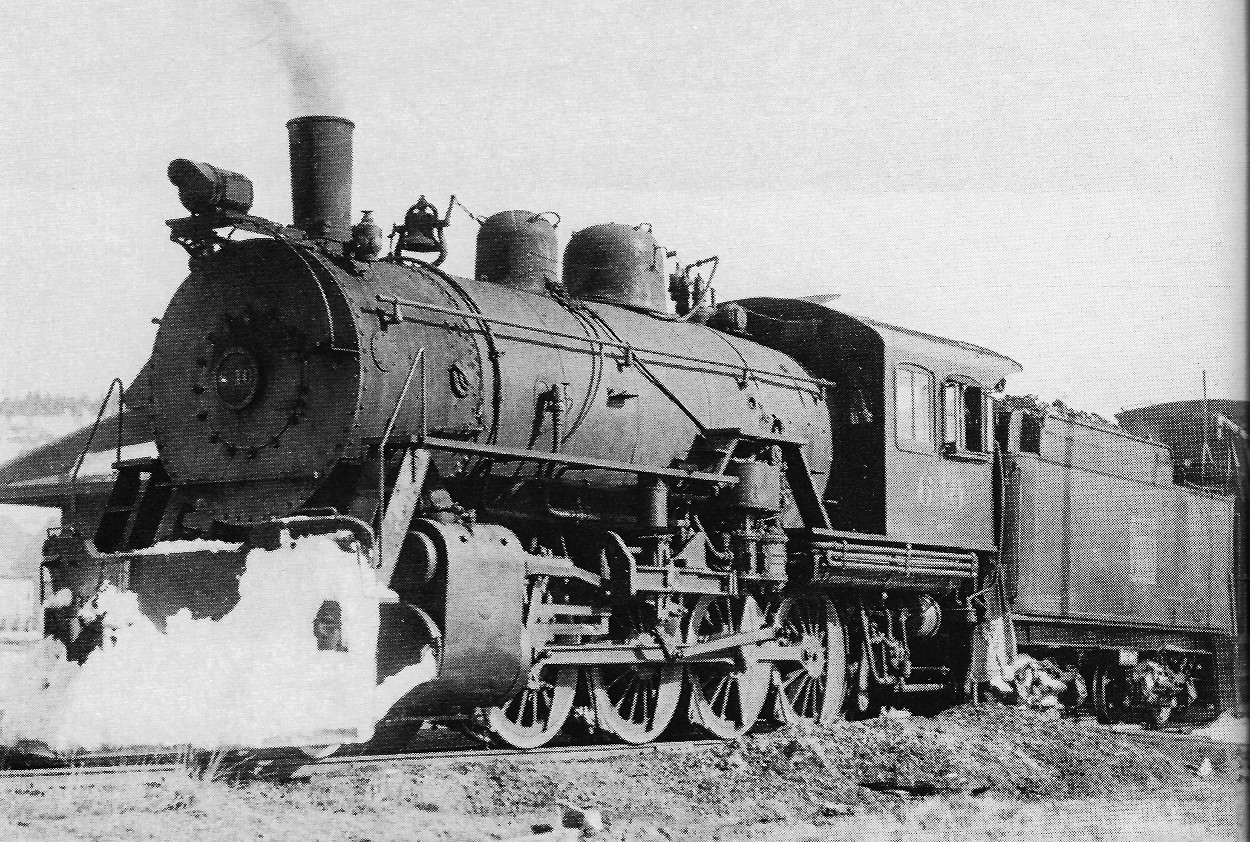 R.W. Andrews photo, March 19, 1949. Leadville, by the water column; in Wagner's The Colorado Road, page 128. Another plow variation, look like the pilot beam protrudes from the edges of the plow blades, like on the narrow gauge engines. http://digital.denverlibrary.org/cdm/singleitem/collection/p15330coll22/id/82951/rec/28  Robert Richardson photo, c1956. Leadville. http://digital.denverlibrary.org/cdm/singleitem/collection/p15330coll22/id/44491/rec/11  Otto Perry photo, September 12, 1962. Leadville, in the last days of C&S steam anywhere. I think Paul is onto something. Were I to model build a small HO standard gauge layout, the Leadville to Climax operation would be very attractive. But I would think the mid-1940s to be preferable, with 2 steam locomotives and less decay in the Leadville yards. And Keith, I'd certainly spring for one of those Overland brass coal conveyors--no shovel loading tenders for my roundhouse guys!
Jim Courtney
Poulsbo, WA |
Re: C&S Standard Gauge Leadville Operations
|
This post was updated on .
In reply to this post by Paul Kattner
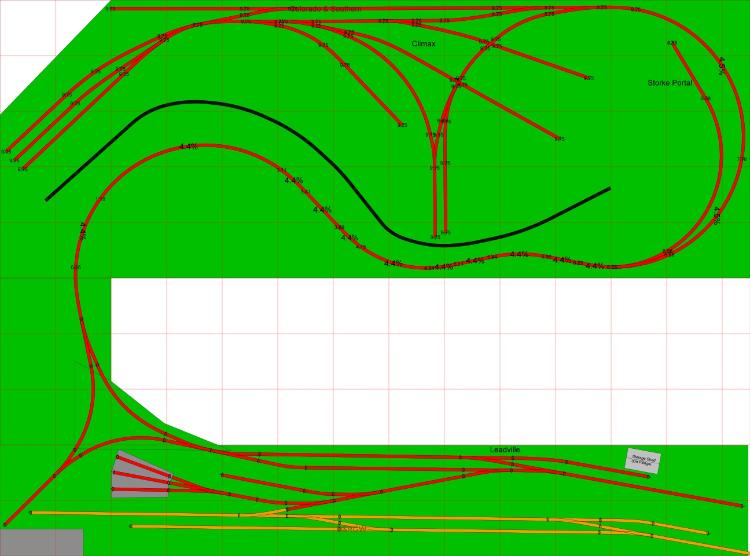 I appreciate everyone's help. At some point I'll try and post a bibliography of the different sources that I have found. I have dug through the Denver Public Library's Collection, Railpictures.net, http://www.rrpicturearchives.net/, Flickr, and Ebay for photos. Trackplan: Here is my latest trackplan created using Anyrail Software. The Rio Grande Interchange is in orange while the C&S is in red. I haven't done the terrain or most of the buildings yet. There are three basic parts to the layout: Leadville, valley of the East Fork of the Arkansas River, and the Molybdenum mine at Climax. There is a steady 4.5% grade from the way at Leadville to the first switch at Climax. The heavy black line is the backdrop separating the Mine Complex from the remainder of the layout. I laid out Climax as best as could using the USGS Map and the few photos that I have found that show an overview of the complex. I really like how a couple of the spurs cross one of the legs of the wye. Most turnouts are Walther's Shinohara #5s with some Fast Tracks #5s being using to represent cut down Shinohara turnouts. There is also a limited number of curved Fast Tracks turnouts. I strongly suspect that there is a derail protecting the grade from runaways at Climax but I have not seen any evidence of it. The biggest challenge that I see with plan is the tail track on the Wye at Climax. There is only about 5 inches of clearance between the end of the tail track and the main line. I figure that the best way to hide the tail track would be to have a nearly vertical rock wall on the side that faces the mainline and a painted backdrop on the side that faces the mine. Unfortunately, I would have to make a portion of the back drop/rock wall removable or install a lift out section to be able to access the tail track for repairs or re-railing errant rolling stock. Rolling Stock: Motive power: #638 and #641. I'll model #641 first because that is the one that was most heavily documented by photographers. I'll use a PFM-United AT&SF 2-8-0 which I have on hand as the basis for it. This is easily the most widely produced HO Scale Brass steam engine with several runs being done over the years. Careful searching of ebay can result in one being snagged for under $100. It is roughly the right size and has the correct 57" drivers. The two biggest technical problems will be constructing the snow plow and altering the valve gear to match the B-4Rs. Documentation on how the plow attaches to the pilot is difficult obtain because I live in Springfield, IL which is 1010 miles away in and 9594 feet below Leadville. #828 (Q Paint) Relettered Proto 2000 CB&Q with a scratchbuilt plow. #828 (BN Paint) Relettered Proto 2000 CB&Q with a scratchbuilt plow. Rolling Stock Way Cars: I have photos of 6 cabooses over the years in Leadville Wooden-C&S (Q Paint): 10505, 10581, & 10604---Kitbashed. Investigating what to use for a source kit. Wide-Vision (Q Paint): 10626 C&S Ex-Santa Fe Steel Caboose: 10401 and 10402. I have a beautiful Centralia Car Shops RTR model off #10401. Non-Revenue rolling stock: Rotary Snowplow #99201: Very heavily kitbashed Walthers Alco Rotary Snowplow. Probably the single most difficult piece of rolling stock to do. Jordan Spreader #99271: Walthers Jordan Spreader kit built with the horizontal air tank. Replaced #99201. Ex-D&RGW Flanger #99350: Scratchbuilt. Replaced #99350. Revenue rolling stock: There was a group of ACFX Covered hoppers that were used to transport concetrate from Climax (and also Henderson Mine). Pretty much all of the other rolling stock seen in photos seams to not be in a specific assigned service. Revenue Rolling Stock Steam Era: I have photos of Boxcars from C&S, D&RGW, IC, Seaboard, SP, NP, Chicago & Eastern Illinois, Southern, Nickle Plate Gondolas from the C&S, Frisco, and the AT&SF. 2-Bay Covered hoppers from the C&S and D&RGW Ballast Hoppers from the D&RGW---I suspect that these were being loaded with tailings from the mine. Structures: All kitbashed or scratchbuilt. Have a good day. Paul Kattner |
Re: C&S Standard Gauge Leadville Operations
|
This post was updated on .
In reply to this post by Jim Courtney
 "Also, is that a covered hopper I see (yellow arrow)??" That would be one of the ACFX Cylindrical Covered Hoppers that was used for shipping out concentrate. There is a tiny photo in the 03/1997 Rail Model Journal on page #4 of one of the cars. They had some rather unique additional stiffeners on the side for Moly concentrate service. There is a photo on the DPL site which shows one of these cars being loaded. Paul Kattner |
Re: C&S Standard Gauge Leadville Operations
|
In reply to this post by Paul Kattner
Paul wrote:
Way Cars: I have photos of 6 cabooses over the years in Leadville Wooden-C&S (Q Paint): 10505, 10581, & 10604---Kitbashed. Investigating what to use for a source kit. American Model Builders (http://www.laserkit.com/laserkit.htm) offers a laser kit for a 28 foot body, CB&Q three window caboose: 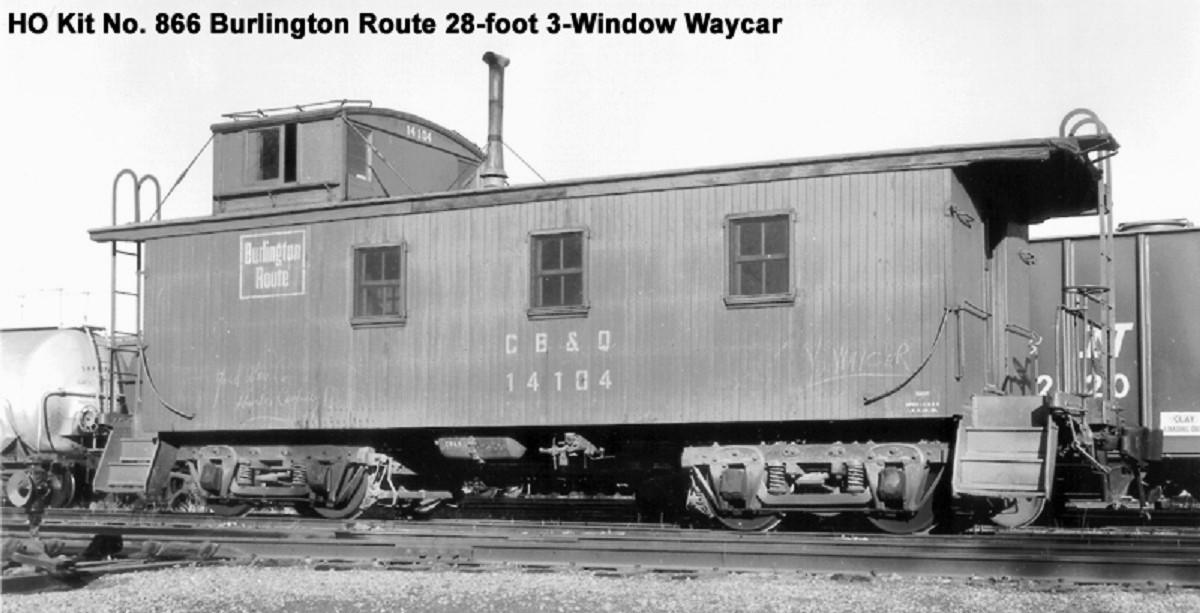  Looks like the cupola side walls might need to be rebuilt, and a new truss rod under frame with arch bar trucks. Otherwise, the window spacing looks pretty close--might be a good starting point for a C&S wood caboose. I like your track plan.
Jim Courtney
Poulsbo, WA |
Re: C&S Standard Gauge Leadville Operations
|
This post was updated on .
In reply to this post by Paul Kattner
Paul,
in reference to your noting D&RGW ballast hoppers.....the Grande used the Slag from the Elliers Smelter for Ballast, I've never seen evidence that the C&S used same on the Climax line, these could've been used for delivering Aggregates for Concrete work perhaps. As for Tankcars, Diesel fuel would have been a commodity in quantity for the Pit machinery and Haulage trucks, also your reference to having Stephen Voynick's Climax book would certainly be the most comprehensive look at this operation.
UpSideDownC
in New Zealand |
Re: C&S Standard Gauge Leadville Operations
|
In reply to this post by Paul Kattner
The popped up on Ebay recently:
http://www.ebay.com/itm/CB-Q-C-S-828-LEADVILLE-1962-DUPE-/281908331638?hash=item41a30bc476:g:LGMAAOSwGotWlnxD The #641 and #828 taken shortly before the #641 was moved to its permanent parking place near the Depot. Paul Kattner |
Re: C&S Standard Gauge Leadville Operations
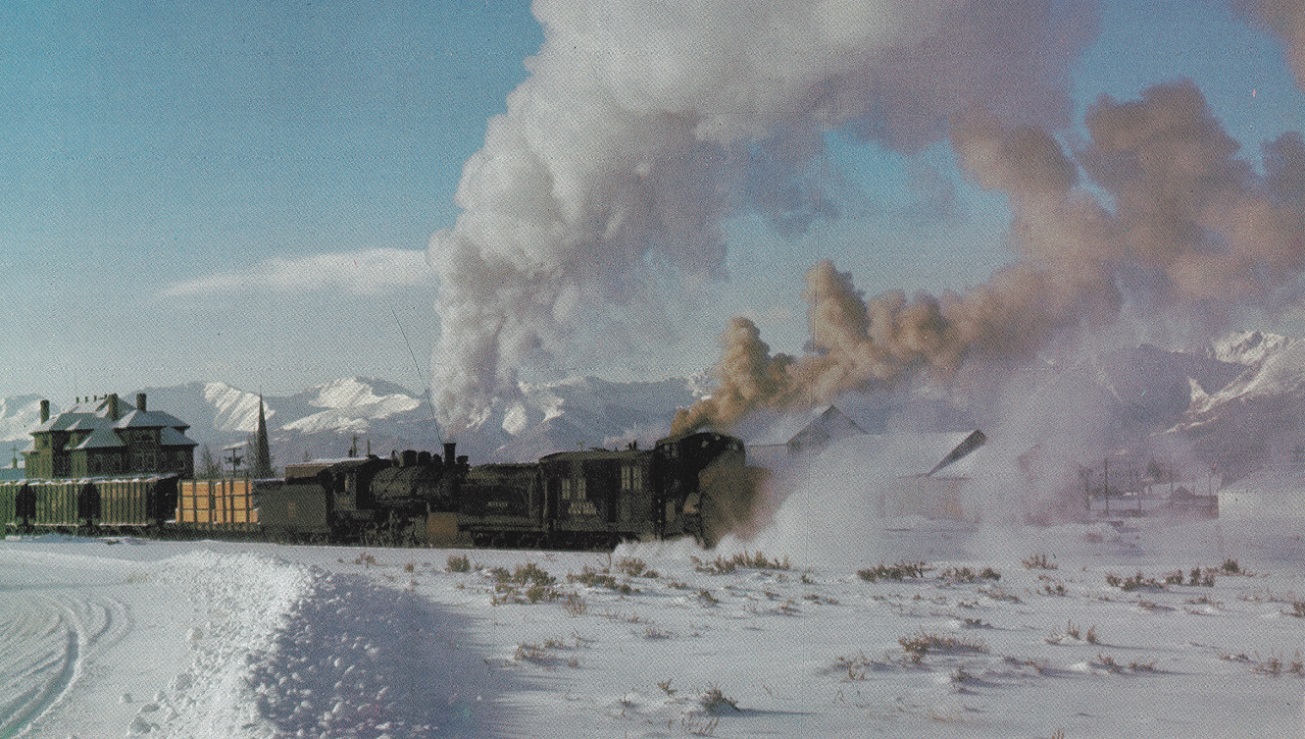 I found this page from a 1996 Sundance calendar while rummaging through my files. It's just too cool not to post, thought it would best fit here. Jim
Jim Courtney
Poulsbo, WA |
Re: C&S Standard Gauge Leadville Operations
|
Jim, that was a Bob Richardson photo I believe. Used in his Chasing Trains book along with another colour shot.
I had this put away for this thread but forgot about it somehow.  http://digital.denverlibrary.org/cdm/fullbrowser/collection/p15330coll22/id/43996/rv/singleitem/rec/5
UpSideDownC
in New Zealand |
Re: C&S Standard Gauge Leadville Operations
 http://digital.denverlibrary.org/cdm/fullbrowser/collection/p15330coll22/id/83040/rv/singleitem/rec/4
UpSideDownC
in New Zealand |
Re: C&S Standard Gauge Leadville Operations
|
In reply to this post by Mike Trent
The C&S 2-8-0's are favorites of mine, having lived in Greeley, CO at the end of the steam era. Anyone living in driveable distance should note that both Nos. 641 and 638 need work to stabilize corrosion and improve their condition. No. 638 appears to have lost its cab windows already and those on the 641 look to be in poor condition. If lost, it would be hard to replicate the windows accurately without the old ones to work from. It is possible for a small group of volunteers to cosmetically restore these engines at reasonably low cost, making them look operable again, even if they are not. Providing shelter is essential if the work is not to be repeated in a few years.
It only requires one knowledgeable person (or one willing to learn) and a few other willing hands. If my experience is typical, train geeks are not likely to participate; all my helpers were simply "community volunteer" types who wanted to try something different than Habitat for Humanity or soup kitchens. The most important work, like polishing and greasing axle journals, cleaning out the firebox, smokebox and tender, cost practically nothing. I'm near completing a 4-6-0 project in Vermont, after five years work. It involved a lot of very hard, dirty work, but only about $4000 dollars in materials have been spent. The locomotive and a passenger car were already under cover and in a museum with 24/7 security. It began as a make-it-run effort 25 years ago, when I worked for the same railroad, with support from the railroad. Ultimately, the railroad was sold to a scab outfit from Texas and we former employees were fired after training our replacements and getting a union back on the property, resulting in us finding new jobs on "real" railroads, where we made 3x as much money. That put the restoration on hold until I retired and restarted the effort, cosmetic-only this time. I live in NY State, so am not likely to participate in restoring a C&S engine, but those who live within driving distance should consider it.. |
|
In reply to this post by Paul Kattner
C&S 641 (Alco Brook Works - July 1906) continues to be displayed at Leadville, Colorado, as of September 22, 2016. Note Leadville Colorado & Southern RR (LCSR) crews used shovels and picks to replace ties. LCSR 1714, GP9, ex-BN 1714, provided air to MofW crew.
|
Re: C&S Standard Gauge Leadville Operations
|
In reply to this post by Chris Walker
Hi Chris,
I'm pretty sure this is slag ballast from Eilers. This was taken about five years ago just below Climax. Th LC&S has since restored this track to operating condition. Cheers, Matt Hutson Nathrop, CO 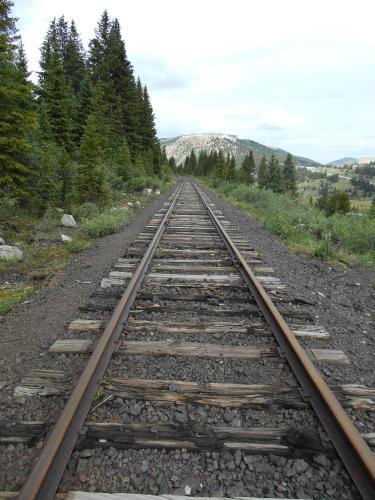
|
Re: C&S Standard Gauge Leadville Operations
|
In reply to this post by bobyar2001
I could probably make replacement windows to the original or current I guess configuration in my wood shop. I would need some plans, dimensions and perhaps some photos. Otherwise it should not be that hard of a project as I have made may doors including french doors with 15 panes of glass each. Any way to gather the needed information from you guys in Colorado?
Best, Todd Ferguson |
Re: C&S Standard Gauge Leadville Operations
|
Actually I live in NY State, not Colorado, but I grew up in Greeley and saw the last of C&S steam. Making windows is not terribly complicated with the right equipment, but having the right dimensions and layout is critical. Thus, it's important that the original sashes be saved for patterns, no matter how deteriorated. I think the 638 has already lost its windows, replaced with plexiglass sheets in the last "restoration", by people with little knowledge of locomotives. Cab windows on steam locomotives let in a certain amount of rainwater anyway (in the lower tracks), but when they go, water gets into the wooden cab lining, rotting it and the flooring and causing rust behind and under the wood. It's important to keep everything in the cab in place as few in-cab photos exist to work from later. Below are some links related to CPR 1095, displayed at Kingston, Ontario. The city spent over $1 million on this cosmetic restoration, that didn't even include a shelter for the engine. The windows were replaced with a non-sliding single pane on each side. http://abpr2.railfan.net/abprphoto.cgi?september11/09-08-11/resized_CP1095.jpg http://www.engine1095.com/project/ http://www.cityofkingston.ca/explore/history/engine-1095 http://www.okthepk.ca/dataCprSiding/news/2010/10011301.htm http://www.redbubble.com/people/photosbyhealy/works/7497347-engine-1095 And here's my project, a 4-6-0 at Shelburne, VT, that I spent the last 6 years restoring (90 percent rust removal, 10 percent painting.).
Bob Yarger From: Todd A Ferguson [via C&Sng Discussion Forum] <[hidden email]> To: bobyar2001 <[hidden email]> Sent: Friday, September 15, 2017 12:52 AM Subject: Re: C&S Standard Gauge Leadville Operations
I could probably make replacement windows to the original or current I guess configuration in my wood shop. I would need some plans, dimensions and perhaps some photos. Otherwise it should not be that hard of a project as I have made may doors including french doors with 15 panes of glass each. Any way to gather the needed information from you guys in Colorado?
Best, Todd Ferguson If you reply to this email, your message will be added to the discussion below:
http://c-sng-discussion-forum.41377.n7.nabble.com/C-S-Standard-Gauge-Leadville-Operations-tp4567p9416.html
|
«
Return to C&Sng Discussion Forum
|
1 view|%1 views
| Free forum by Nabble | Edit this page |

